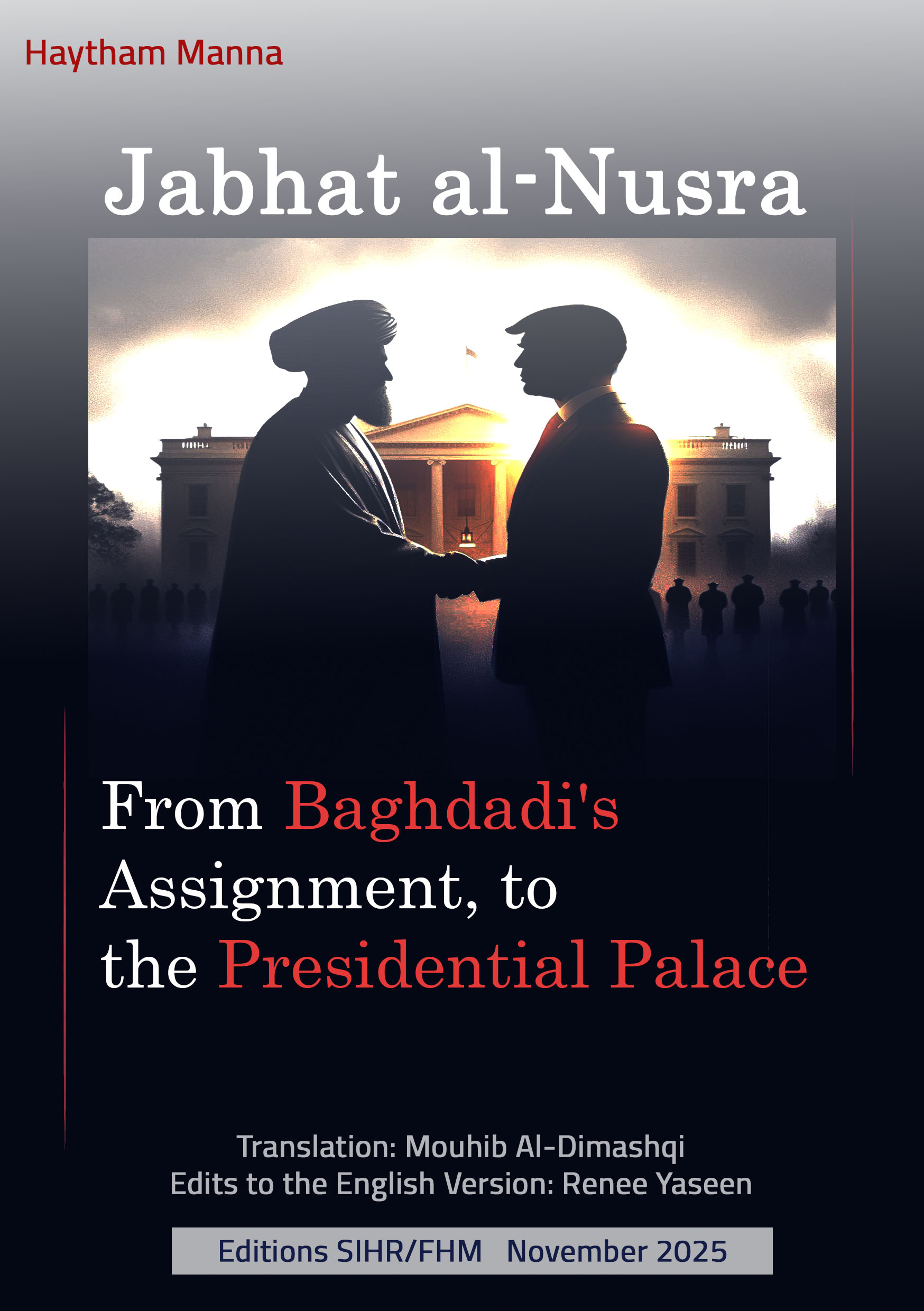Less than a month before Bashar al-Assad fled Damascus, an Arab cartoonist called me on the day Assad arrived in Riyadh to attend an Arab-Islamic summit. He asked: “How can I sum up the Syrian president’s presence at the summit in a single image?” I replied: “Take a skeleton from a medical illustration and place Assad’s head on it.” Of course, my friend didn’t take my suggestion.
Meanwhile, in Geneva, an HD (Centre for Humanitarian Dialogue) employee organized a meeting between visitors from northwestern Syria and the American and British embassies and intelligence services. Preparations were underway in Hakan Fidan’s office for a military operation whose minimum objective was the entry into Aleppo and the rest of Idlib province along strategic roads, and whose maximum objective was a move toward Damascus. Hillary Clinton’s 2012 remark on the Syrian National Council echoed in my mind: “Expired.”
Throughout more than half a century of my life, I’ve always refused to be part of the “Let the Devil Come” party. Having followed Jabhat al-Nusra and its offshoots since the Qazzaz bombings and a funeral in Jaramana, I and several Syrian democrats saw “Salafi jihadism” as a counter-revolutionary force against the peaceful civil uprising. For example, Assad issued presidential pardons for al-Qaeda members while Syria’s best youth fell to the bullets of his criminal regime.
Our suspicions were later confirmed when Jabhat al-Nusra issued a takfiri fatwa against me and Abdelaziz al-Khayyer in summer 2012—labeling me a “Shiite communist” and him a “Nusayri Alawite.”
In my final meeting with Ambassador Robert Ford, he suggested I meet with the “Ahrar al-Sham” movement. I declined. In spring 2014, a former Sidnaya prisoner who had shared a cell with Hassan Aboud called me. He told me that Aboud and a clever young man (Mohammad al-Shami) were working on a “Revolutionary Honor Charter.” It was, in reality, a last cry before collapse. Syrians had lost control of their fate; foreigners were now making the decisions.
Since then, I focused my research on the Islamic State in Iraq and Jabhat al-Nusra: their formation, functions, financial and military support, the cross-border fighter networks, and the contradictions between their field religious practices and their subordination to the geopolitical strategies of Erdoğan and Fidan.
On July 12, 2014, in Paris, we organized a joint seminar with Turkish and Syrian opposition figures[1]. We had verified information that the relationship between Turkey’s MIT and Jabhat al-Nusra had progressed from “tense tolerance” to active cooperation—both security and military—through SADAT (a defense consultancy) and the quasi-governmental IHH relief agency. This relationship was first exposed publicly on January 9, 2014, when Turkish gendarmerie stopped weapon shipments bound for Jabhat al-Nusra.
Despite Turkey’s declared commitment to UN Resolution 2254 and later the Sochi Agreement (2018) to clear Idlib of terrorist groups like Hay’at Tahrir al-Sham (HTS), Turkish cooperation with them only deepened—economically through border crossing revenues and Turkish investments in areas under HTS’s “Salvation Government.”
On November 8, 2018, I gave a lecture in Geneva about “Turkish-Qatari support for Islamic movements in Syria” and MIT’s ties to HTS and its government. No Western diplomat present took my remarks seriously[2].
After the defeat of ISIS and the intervention of the international coalition, Jabhat al-Nusra—then HTS—focused on imposing a strict socio-religious order in its territories: monopolizing civil and humanitarian activities, enforcing “hisbah” (moral policing) in the Wahhabi-Talibani sense. Turkish intelligence oversaw alliances, enmities, and funding. HTS propaganda became increasingly anti-Syrian and sectarian, leading to mass displacement and full prisons for those guilty of “sins.”
Idlib became a strict camp of daily control. “Jihad of the Sunnis” became the rallying cry across speeches and school curricula. HTS institutionalized sectarianism and integrated foreign fighters as a core military base. Authority structures followed the logic of “loyalty and disavowal,” while the war economy mirrored the regime’s corruption.
I often corrected my friends who referred to HTS-held areas as “liberated” by saying: “To be accurate, call them ‘repeated’ areas.”
HTS’s ideologically closed, sectarian model was chosen (by Fidan) to be expanded across Syria. Meanwhile, the “Coalition” and “Interim Government” were sidelined and cut off from aid. Other factions, like the “National Army,” were left waiting for their turn at plunder, participating in joint raids, Alawite expulsions, property confiscations, and looting under the official label of Fulul “remnants of the former regime.”
It’s worth recalling that Bashar al-Assad was the only political figure in the region who said nothing all year about the genocide in Gaza—even the Comoros presidency condemned Israeli massacres. But that didn’t endear him to British, Turkish, or Qatari intelligence.
Even if the proposed alternative regime inspired little trust, replacing a collapsed, bloody dictatorship with a weaker, authoritarian one seemed acceptable to many countries involved in the Syrian war. The military-security front had exhausted itself. Civilians in rebel-held areas were simply struggling to survive. Ukraine’s war, Gaza’s extermination, and Hezbollah’s battering had eroded the “wings of defense” that delayed Damascus’ fall by ten years.
The “Military Operations Room” inherited a collapsed state and bankrupt economy. Borrowing from satirist Khateeb Badleh, it was a “shattered, torn-apart, punctured” country, with over 80% of people below the poverty line and under the heaviest sanctions in the developing world. The “new administration,” whose top figures had Syrian blood on their hands and were listed by the UN as terrorists, was incapable of transitioning from sectarian militancy to national reconstruction.
Thus, dissolving the army and police were among their first moves, followed by firing over a quarter of public sector workers (mostly Alawites and other non-Sunni groups). Within 100 days, sectarian cleansing massacres occurred on the Syrian coast.
Gulf and Western media downplayed the events and adopted the new regime’s official narrative: that this was a “foiled coup attempt by regime remnants.” Despite extreme danger, Syrian human rights defenders documented the genocide-in-progress by jihadi groups—most now integrated into the new army and security forces—in one of the most important human rights reports in modern Syrian history.
Although over a million people read the “Human Rights and Humanitarian follow-up Committee” (Syria) report[3], neither the UN Security Council nor the UNHCR, nor intergovernmental bodies like the EU or Arab League responded proportionately to the atrocities.
As the saying goes: “Easy money teaches theft; unpunished crimes teach murder.” The takfiri slogan expanded southward. We now hear the ragged, masked militia shouting: “Put the weapons back on the shelves—there’s nothing worse than Alawites except the Druze!”
The “original sin” of Jabhat al-Nusra still activates mobs and the ignorant whenever the new sectarian regime needs them. Our fear is that the crimes in Jaramana, Sahnaya, al-Saoura al-Kubra, and elsewhere may go unnoticed due to local and international complicity—just like what happened earlier in Pakistan. Now, the desperate masses cry out:
“We don’t want electricity, we don’t want water… At your service, O Messenger of Allah… We want the infidels executed!”
The new regime has shattered Syrians’ last civic immune defenses. It redirected people’s attention away from rebuilding, national unity, equal citizenship, and productive work—toward killing, displacement, and robbing fellow Syrians with the help of foreign fighters.
Defining loyalty through Sunni sectarian identity and casting all others as enemies has already brought us to disaster in the coast, Jaramana, Sahnaya, Soura, Homs, and Suwayda. This path promises the worst scenarios for Syria’s future.
We will not delve here into determining responsibilities for future possibilities, which include division, partition, and civil war. The model presented to us by Hay’at Tahrir al-Sham does not resemble the overwhelming majority of Syrians. No matter how much some newspapers try to report opinion polls they call “scientific and accurate” about the popularity of the group holding power in Damascus, or how some focus on the new outfits of the Takfiri jihadists, their sectarian beliefs and daily practices confirm, day after day, the necessity of exploring other scenarios before destroying what remains of this torn country.
Sectarian mobilization and incitement is a weapon of mass destruction. I’ve said it dozens of times and will keep saying it:
We have no future with those who made it a strategy for domination and rule.
————————–
Haytham Manna (Daraa, 1951), physician, jurist and anthropologist, author of about 60 books in Human Rights, Islam and democracy He is a historic activist for the cause of peoples and human rights. Director of the Scandinavian Institute for Human Rights/Haytham Manna Foundation in Geneva and honorable President of the International Movement for Human and Peoples’ Rights (IMHPR). He received the medal of human rights from NAS in Washington in 1996.
————————–
Washington, 12 May 2025. Syrian Conference for Democracy.
[1] The Consequences of War in Syria on the relations between the Peoples of Turkey and Syria
. SIHR/FHM & ACHR, Malakoff 12/07/2014.
[2] Hakan Fidan, the current Turkish Foreign Minister, acknowledged the longstanding relationship and coordination with Hayat Tahrir al-Sham, but did not disclose this until 2024 due to its designation as a terrorist organization.
[3] https://sihr.fr/eng/sectarian-cleansing-as-a-policy-of-governance/



